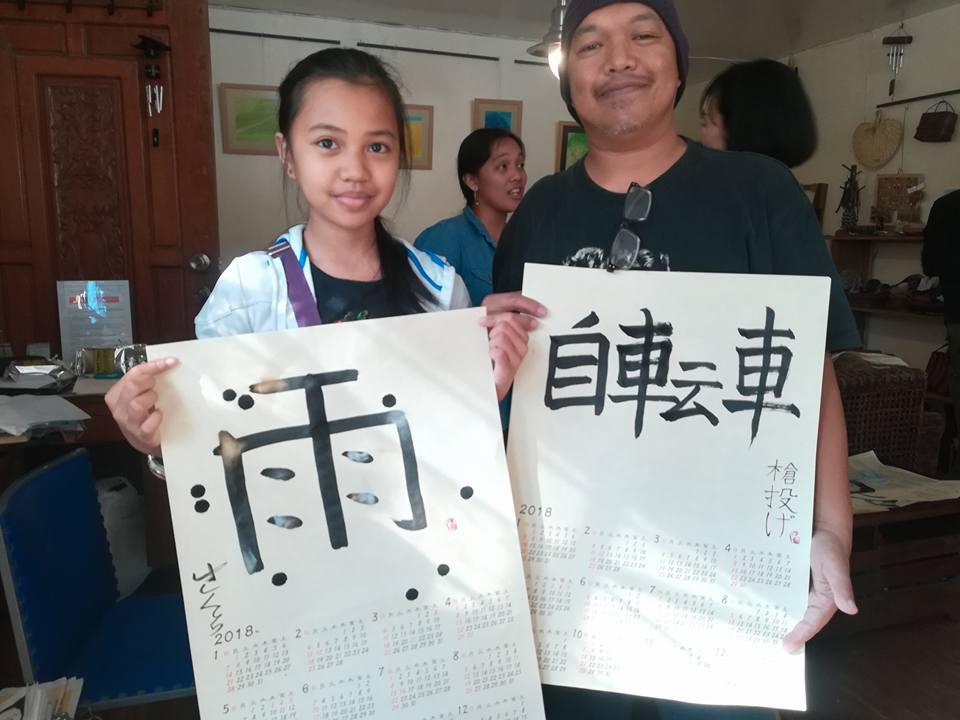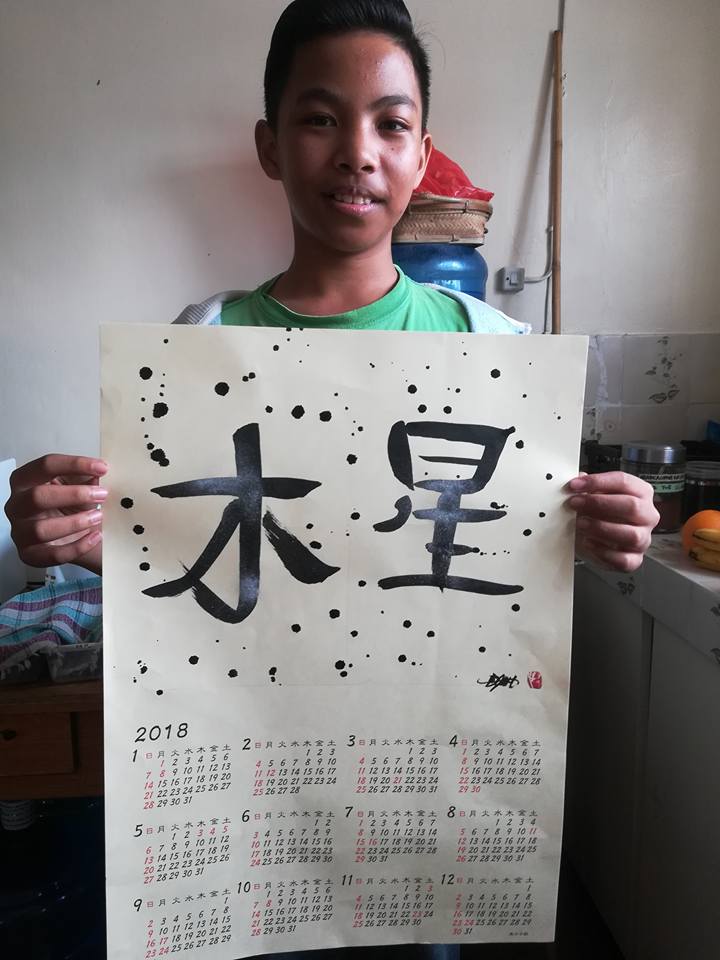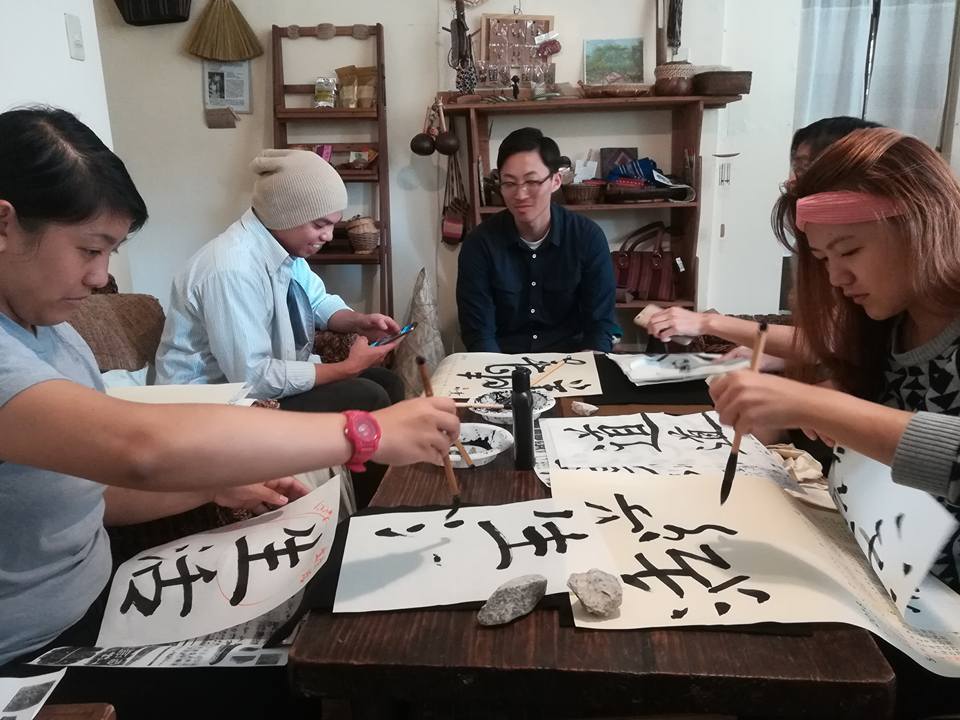活動報告
|
2025年 |
2024年 |
2023年 |
2022年 |
2021年 |
2020年 |
2019年 |
2018年 |
|
2017年 |
2016年 |
2015年 |
2014年 |
2013年 |
2012年 |
2011年 |
2010年 |
|
バックナンバー
- 2025/04/01
かわごえこどもまつり『ミニかわごえ』に参加しました。 - 2025/03/07
「万博の柱に名を刻む!プロジェクト」に参加しました。 - 2025/02/14
「八王子夢街道駅伝ボランティア」に参加しました。 - 2025/01/30
今年も盛岡市立仁王小学校でCSR書道教室を実施しました。 - 2025/01/30
第38回障害者文化展「感じたままに伝えたい」 - 2024/12/20
チョコ募金2025に参加しました。 - 2024/11/19
明石公園清掃ボランティアに参加しました。 - 2024/10/22
今年も定期避難訓練を実施しました。 - 2024/10/08
珠洲市(すずし)の銭湯「海浜あみだ湯」さんに高圧洗浄機を寄贈いたしました。 - 2024/08/16
熊野神社夏祭り「熊野神社祭礼」に参加いたしました。 - 2024/06/19
2024八王子環境フェスティバルに出展しました。 - 2024/02/14
八王子夢街道駅伝2024に参加いたしました。 - 2024/01/25
八王子西特別支援学校の工場見学を行いました。 - 2023/12/23
岩手県盛岡市立仁王小学校でCSR書道教室を実施しました。 - 2023/12/22
CSR活動の一環として除雪機を寄贈いたしました。 - 2023/12/15
チョコ募金2024に参加しました。 - 2023/10/05
小津、恩方工場で定期避難訓練を実施しました。 - 2023/08/17
熊野神社夏祭り「熊野神社祭礼」に参加いたしました。 - 2023/06/05
2023八王子環境フェスティバルに出展しました。 - 2023/06/02
八王子西特別支援学校から生徒さんを受け入れてインターンシップを実施致しました。 - 2023/05/25
公益社団法人全国産業資源循環連合会より地方優良事業所表彰を受賞いたしました。 - 2023/02/12
[八王子夢街道駅伝ボランティア」に参加しました。 - 2023/02/07
八王子西特別支援学校の工場見学を行いました。 - 2023/02/02
沖縄県の波照間島から感謝の知らせが届きました。 - 2023/01/31
八王子市長賞受賞!(第36回障害者文化展) - 2022/12/23
地元の特別養護施設にクリスマスコニファーを寄贈しました。 - 2022/12/15
チョコ募金2023に参加しました。 - 2022/10/31
八王子市立恩方中学校より企業訪問を受けました。 - 2022/09/30
定期避難訓練を実施しました。 - 2022/08/31
沖縄は与那国島にて、与那国町立図書室立ち上げ支援を行いました。 - 2022/06/28
障害者雇用優良中小事業主として認定されました。(もにす認定制度) - 2022/06/20
小津工場でSDGsの研修を実施しました。 - 2022/06/13
八王子特別支援学校から生徒さんを受け入れてインターンシップを実施致しました。 - 2022/06/05
『2022八王子環境フェスティバル』に出展しました。 - 2022/04/18
地元環境保全団体の主催する『お花見会』に参加しました。 - 2022/03/09
ウクライナを緊急支援するために『国連UNHCR協会』へ寄附を行いました。 - 2022/02/14
【お知らせ】ラジオ大阪のSDGs啓発キャンペーンに協賛しました。 - 2022/01/11
愛知県一宮市で書道教室を開催しました。 - 2021/12/23
今年も地元の特別養護施設にクリスマス用コニファーを寄贈しました。 - 2021/12/20
広島県で羊毛に関するワークショップを開催しました。 - 2021/12/17
チョコ募金2022に参加しました。 - 2021/10/29
八王子市立恩方中学校の生徒による訪問学習を実施しました。 - 2021/09/27
本社小津工場に於いて外国人研修生の技能検定試験が行われました。 - 2021/09/21
定期避難訓練を実施しました。 - 2021/08/02
地域情報紙『町自連だより(7月15日発行)』 へ協賛いたしました。 - 2021/07/07
「七夕書道教室」を開催しました。 - 2021/05/25
東京都内「品川区 天王洲アイル」に『しごと体験SDGs』拠点をLORANS.(ローランズ)と共同設立 - 2021/05/17
ラジオ大阪にてオーエム通商のCMが流れています。 - 2021/05/10
「お花屋さんのこどもプロジェクト」事例を紹介します。 - 2021/04/28
震災10年目を迎えた被災地の小学校へデジタルカメラを寄贈しました。 - 2021/03/30
NPO法人 スペシャルオリンピックス日本・岩手へクーラーボックスを寄贈しました。 - 2021/02/01
オーエム通商はSDGs(持続可能な開発目標)を通じて一般社団法人ローランズプラスへ事業支援を行います。 - 2021/01/07
チョコ募金2021に参加しました。 - 2020/12/23
地元の特別養護施設にクリスマスツリーを寄贈しました。 - 2020/11/26
青森県北津軽郡の薄市(うすいち)こども園にてリモートCSR書道教室を実施しました。 - 2020/09/24
大阪府より感謝状をいただきました。 - 2020/09/06
定期避難訓練を実施しました。 - 2020/06/24
青森県北津軽郡の薄市(うすいち)こども園にてCSR書道教室を実施しました。 - 2020/06/11
青森公立大学 国際芸術センター青森にてリサイクルワークショップを開催しました。 - 2020/06/01
感染症対策として、地元にマスクを寄附し感謝状をいただきました。 - 2020/05/28
小津町清掃活動を実施しました。 - 2020/02/27
八王子特別支援学校から生徒さんを受け入れてインターンシップを実施致しました。 - 2020/02/09
「八王子夢街道駅伝ボランティア」に参加しました。 - 2020/01/20
岩手県盛岡市仁王小学校にてCSR書道教室を実施しました。 - 2020/01/17
八王子特別支援学校工場見学を行いました。 - 2019/12/19
チョコ募金2020に参加しました - 2019/11/30
ベトナム北部の少数民族へのCSR活動(続報) - 2019/10/22
ベトナム北部の少数民族の小学校にてCSR活動を実施しました。 - 2019/10/17
障がい者雇用で表彰を受けました。 - 2019/09/14
ベトナム北部の少数民族と芭蕉布(バナナ)復興のワークショップを開催しました。 - 2019/08/24
布の周辺を食べる/ 蚕の糞染 in バンガロール Eat around the cloth/ Silk worm’s poop to DYE in Bangalor - 2019/08/19
バンコクの子ども達と、古くなった衣服を藍染めをしました。Work shop/ Indigo dyeing of children's clothes that became old in Bang - 2019/08/11
地元熊野神社の夏祭りへ今年も参加させていただきました。 - 2019/08/07
『合同避難訓練』を実施しました。 - 2019/07/15
蚕の糞茶を飲む、糞茶で染める in 沖縄 Eat around the cloth/ Silk worm’s poop to DYE in Okinawa - 2019/06/19
八王子特別支援学校から生徒さんを受け入れてインターンシップを実施致しました。 - 2019/06/16
蚕の糞茶を飲む、糞茶で染める in 台北 Eat around the cloth/ Silk worm’s poop to DYE in Taipei - 2019/06/01
『2019八王子環境フェスティバル』に参加しました。 - 2019/05/13
ベトナムはハノイにて、CSR書道教室を実施しました。 In Hanoi, Vietnam, we conducted a CSR calligraphy workshop. - 2019/03/10
3月9,10日 川越こども大学 ミニ川越にてCSR書道教室を実施しました。 - 2019/03/03
3月3日 沖縄 那覇ひめゆりピースホールにてCSR書道教室を実施しました。 - 2019/02/17
「京都マラソン2019ボランティア」に参加しました。 - 2019/02/13
八王子特別支援学校から生徒さんを受け入れてインターンシップを実施致しました。 - 2019/02/10
「八王子夢街道駅伝ボランティア」に参加しました。 - 2019/01/25
岩手県盛岡市仁王小学校にてCSR書道教室を実施しました。 - 2019/01/19
八王子特別支援学校の生徒さんの工場見学を実施致しました。 - 2018/12/26
冬季小津町清掃活動を実施しました - 2018/12/17
チョコ募金2019「戦場のたんぽぽ」に参加しました - 2018/12/09
「多摩動物公園森づくりボランティア」に参加しました。 - 2018/11/30
東京都立南大沢学園から生徒さんを受け入れてインターンシップを実施致しました。 - 2018/10/24
オーエム通商主催・第1回学校コンサートを開催しました。 - 2018/10/24
迅速な復旧対応に対しKDDI様から感謝状をいただきました - 2018/10/19
八王子特別支援学校から生徒さんを受け入れてインターンシップを実施致しました。 - 2018/10/08
私たちはインドのニューデリーにてCSR書道のワークショップを開催しました。We held CSR workshop of Japanese calligraphy in New Delhi, Ind - 2018/10/07
第47回恩方地区市民大運動会に参加させていただきました。 - 2018/08/23
タイのバンコクにて、CSR書道教室を実施しました。 - 2018/08/12
地元熊野神社の夏祭りへ今年も参加させていただきました。 - 2018/08/09
夏季小津町清掃活動を実施しました。 - 2018/07/13
八王子特別支援学校から生徒さんを受け入れてインターンシップを実施致しました - 2018/06/16
宮城県亘理郡山元町に「東北復興応援ボランティア」として参加しました。 - 2018/06/02
2018八王子環境フェスティバルに出展致しました - 2018/06/01
ハノイにて書道のワークショップを開催しました。 We had a Japanese calligraphy workshop in Hanoi on 1st June. - 2018/05/24
小津町清掃活動の実施 - 2018/05/06
フィリピンのバギオにてCSR書道教室『書道のカレンダーを作ろう!Let's make a SHODO calendar with character you like.』を実施いたしました。 - 2018/04/21
ソフトバンク(株)で開催されたケータイ分解イベントに参加しました。 - 2018/03/30
東京都市大学で開催されたPC解体イベントに参加しました。 - 2018/03/21
2018年3/21 フランスはパリにてCSR書道教室を実施しました。We carried out a CSR calligraphy workshop in Paris, France. - 2018/03/10
3月10,11日 こども大学かわごえ にてCSR書道教室を実施しました - 2018/02/22
2月22日 墨田区立隅田小学校にてCSR書道教室を実施しました。 - 2018/02/03
2018 2/3 ハノイにて書道のワークショップを開催しました。 We had a Japanese calligraphy workshop in Hanoi on February 3rd, 20 - 2018/01/28
2018 1/28 ハノイにて書道のワークショップを開催しました。 We had a Japanese calligraphy workshop in Hanoi on January 28th. - 2018/01/19
八王子特別支援学校による工場見学を実施致しました - 2017/12/19
チョコ募金「みんながHappyになれるチョコ」に参加しました - 2017/12/08
盛岡市立仁王小学校CSR書道教室 - 2017/11/30
大阪市立磯路小学校CSR書道教室 - 2017/10/06
八王子特別支援学校から生徒さんを受け入れてインターンシップを実施致しました - 2017/08/13
地元の「熊野神社」に賽銭箱を奉納させて頂きました。 - 2017/06/30
八王子特別支援学校から生徒さんを受け入れてインターンシップを実施致しました - 2017/06/05
2017八王子環境フェスティバルに出展致しました - 2017/05/08
高尾山環境保全活動を実施しました。 - 2017/03/12
埼玉県川越市『こども大学かわごえ』にて 「CSR書道教室」を開催致しました - 2017/03/01
第一回 八王子市障がい者支援企業等表彰を受賞いたしました。 - 2017/02/08
墨田区隅田小学校にて書の特別授業を行いました - 2017/01/26
八王子特別支援学校から生徒さんを受け入れてインターンシップを実施致しました - 2017/01/20
八王子特別支援学校による工場見学を実施致しました。 - 2016/12/07
岩手県盛岡市仁王小学校にてCSR書道授業を行いました - 2016/10/17
社会貢献活動の一環として展開しているエコキャップ運動の成果として今回 14,190個の支援を行いました。 - 2016/08/14
地元神社の夏祭り「熊野神社祭礼」に今年も参加致しました - 2016/06/22
八王子特別支援学校から生徒さんを受け入れてインターンシップを実施致しました - 2016/06/04
2016八王子環境フェスティバルに出展致しました - 2016/03/13
埼玉県川越市における『こども大学かわごえ』において 「CSR書道教室」を開催致しました - 2016/02/03
墨田区隅田小学校CSR書道教室 - 2015/12/04
岩手県仁王小学校CSR書道教室 - 2015/08/16
熊野神社祭礼に参加致しました - 2015/07/10
インターンシップ受け入れの実施 - 2015/06/23
職場体験実習を実施致しました - 2015/06/06
2015八王子環境フェスティバル - 2015/04/05
岩手スペシャルオリンピックス発足祝賀会 - 2015/03/14
こども大学(ミニかわごえ) - 2015/02/07
墨田区隅田小学校にて書道授業CSR活動報告 - 2015/02/05
岩手県盛岡市 仁王小学校にて書道CSR活動報告 - 2014/06/27
工場見学のお知らせ - 2014/03/16
こども大学かわごえ - 2013/11/14
工場見学のお知らせ - 2013/06/21
工場見学のお知らせ - 2013/06/01
2013八王子環境フェスティバル - 2013/02/21
職場体験実習のお知らせ - 2012/06/13
工場見学のお知らせ - 2012/06/08
インターシップのお知らせ - 2012/06/02
2012八王子環境フェスティバル - 2011/10/18
障がい者のインターンシップ実施 - 2011/07/08
障がい者のインターンシップ実施 - 2011/06/04
2011八王子環境フェスティバル - 2010/06/05
2010八王子環境フェスティバル
フィリピンのバギオにてCSR書道教室『書道のカレンダーを作ろう!Let's make a SHODO calendar with character you like.』を実施いたしました。
フィリピンのバギオにてCSR書道教室『書道のカレンダーを作ろう!Let's make a SHODO calendar with character you like.』を実施いたしました。
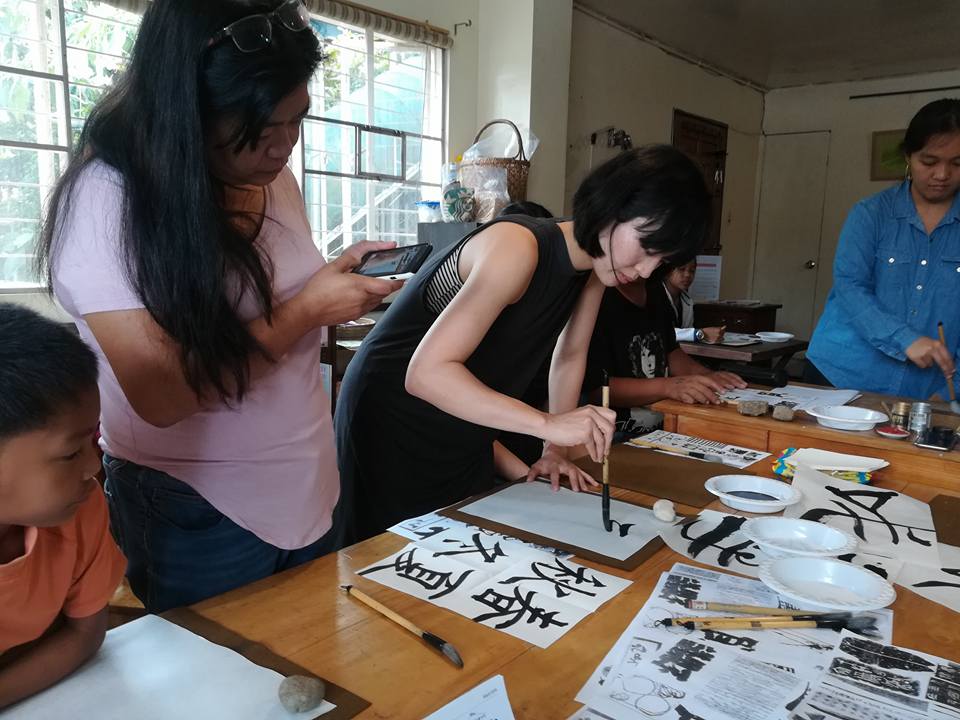
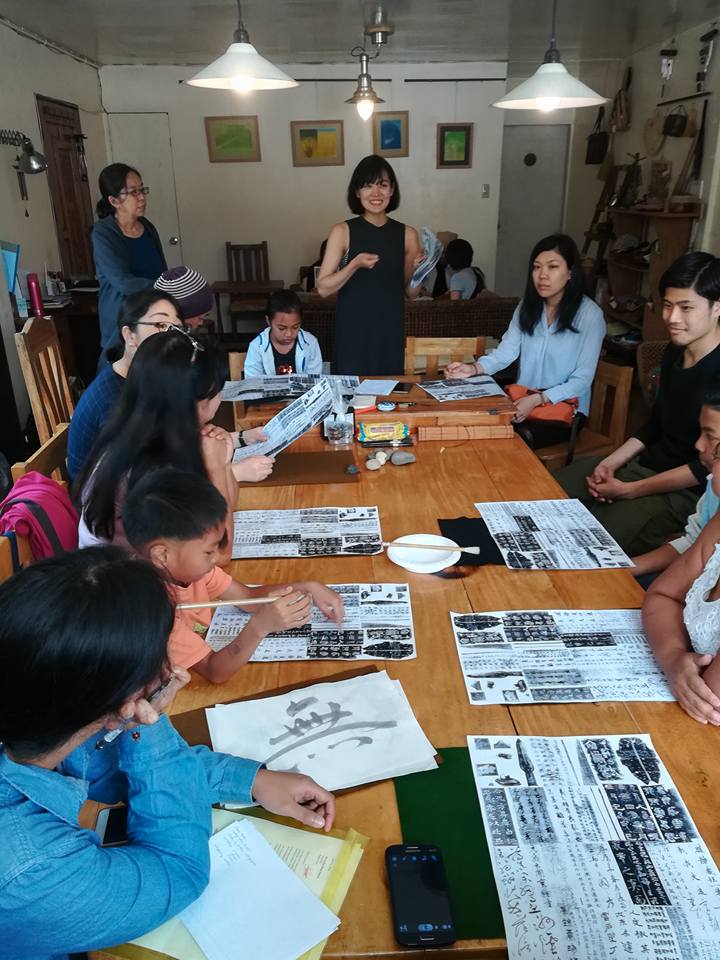
会場のTALAについて
About 『TALA』 https://www.facebook.com/talacommunity/
こちらを運営している反町真理子さんはNGO団体コーディリエラ・グリーン・ネットワーク(CGN)として、
フィリピン山岳でのコーヒー栽培など、フェアトレードのお仕事をされています。
https://www.facebook.com/Cordillera-Green-Network-102560756455347/?timeline_context_item_type=intro_card_work&timeline_context_item_source=1663607768
ここTALAを拠点に、バギオや山岳地帯にて、コーヒーに限らずフェアトレード商品開発や、山岳地帯での演劇、紙作り、教育に関する様々なワークショップを展開し、ゲストハウスも運営されています。(インターンも受け付けております。)
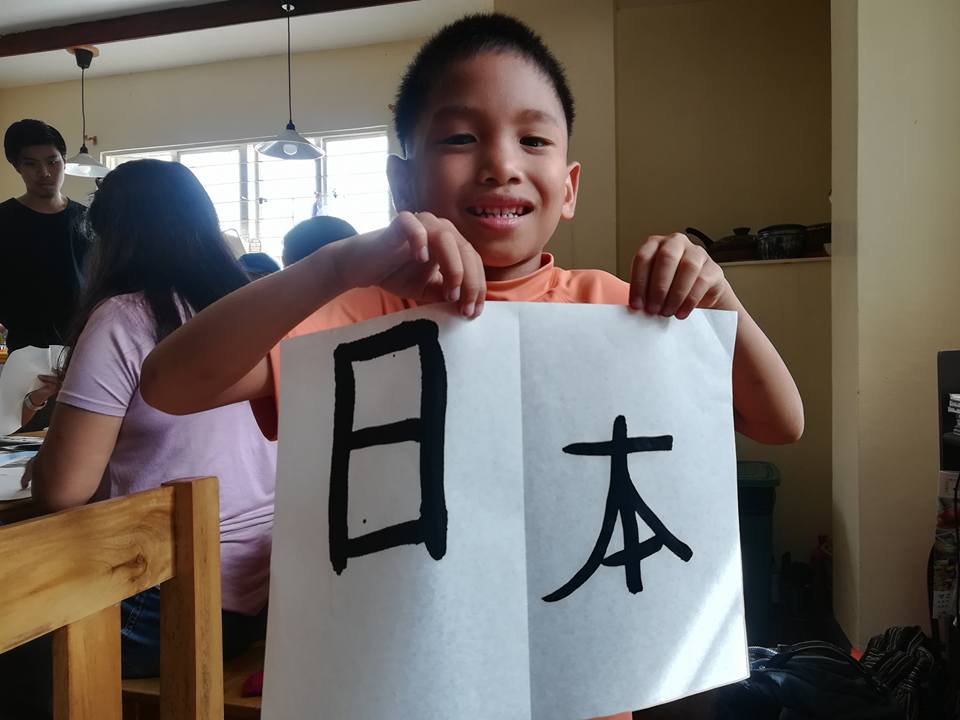
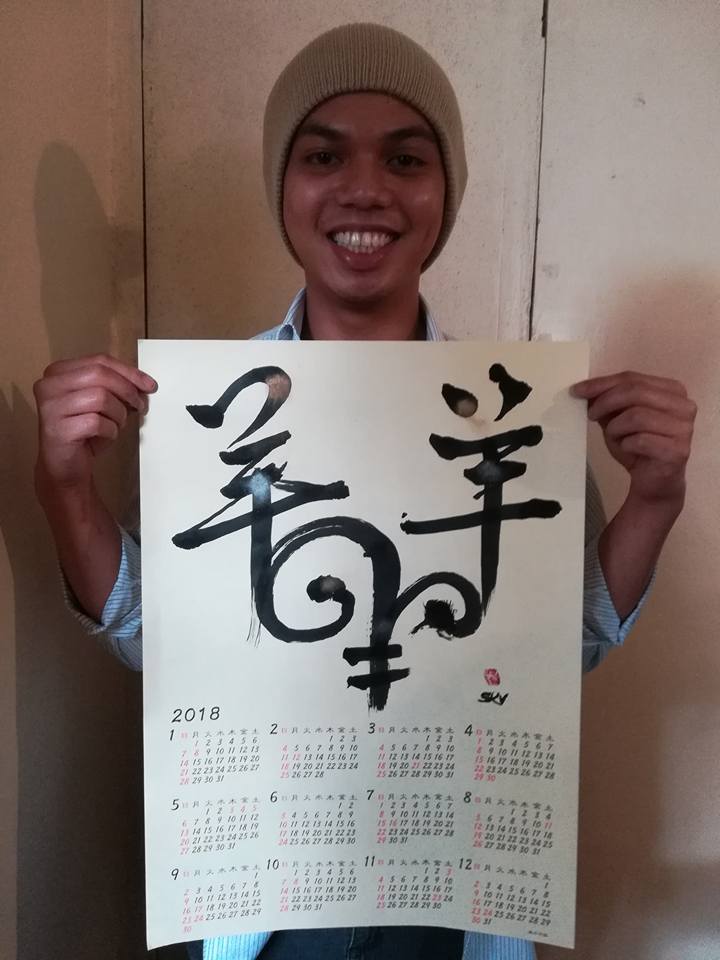

会場のTALAさんから感想をいただきました。
・・・・・・・・・
「ハノイより書道家の遠藤薫先生をTALAにお招きし、
書道ワークショップが開かれました。
たくさんのご参加ありがとうございました!
先生が教えてくれたことは、
まず道具にたくさん触れこと、
ただ見本に習って書くのではなく、絵を描くように楽しむこと、
思いがけない筆跡こそ、HAPPY ACCIDENTであり、自分だけのより魅力的な作品が出来ること。
かおり先生がなめらかにしなやかに筆を運ぶ実演の様子や、参加者のみなさんが生き生きと書道を楽しむ様子を見ながら、私自身も書道の見方がこれまでとまるで変わりました。
書道は、ただ美しい字を書けるようになるための教育ではなく、楽しむべきアートなんだって。
それまでちょっと遠かった世界に近づく、そんな場をこれからも
TALAで提供していけたらと思います。」
「We've done a Japanese calligraphic art workshop, "Let's make your own SHODO calendar" with many participants delightfully. Our SHODO teacher Kaori taught us SHODO is not just a education to make Japanese letters beautifully imitating as same as common sample. She emphasized that SHODO is like a kind of art to enjoy like drawing because origin letters of Kanji were made by symbolizing in the shape of the things. She told if your writing brush went differently from you expected, you don't have to be disappointed because it is a HAPPY ACCIDENT to make your letter more attractive and unique!
Thank you for coming to this workshop, for all of participants.
We hope we can create and provide you opportunities you can discover something new, learnable and enjoyable from now on.」By, TALA
・・・・・・・・・
『書道のカレンダーを作ろう!Let's make a SHODO calendar with character you like.』
書道の学習を基礎に、芸術としての書の心に触れる試みです。
あなたの好きな字を用いて、書のカレンダーを製作します。
ここでは、実験、挑戦を通してあなたらしい「うまい」を発見することが目的です。
自然の力を認め、操ることが書の美です。
偶然の美を楽しんで下さい。
Based on the technique of SHODO (the calligraphic art form of Japan), this workshop is
an introduction in the appreciation of the art of SHODO.
The lesson will emphasize experimentation, discovery, and having fun with attempting new styles.
Creating a sense of freedom with calligraphy will be one of our goals.
It is beauty of SHODO to recognize and use the power of nature.
Please, enjoy “Happy accidents”.
===================================================
日時/ 2018 5月6日 13:30-15:00
場所/ TALA share & guesthouse
対象年齢/ 5歳から (保護者歓迎)
参加料/ 無料
*Date / 13:30-15:00, May 6, 2018
*Venue / TALA share & guesthouse
(25 J. Felipe St. Gibraltar, Baguio City, 2600, Philippines)
*Participants can be 5 years old and above
*Admission free
